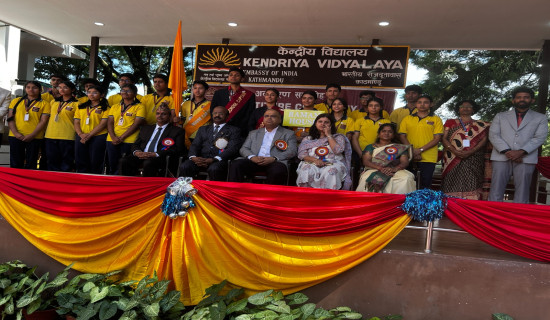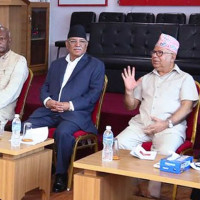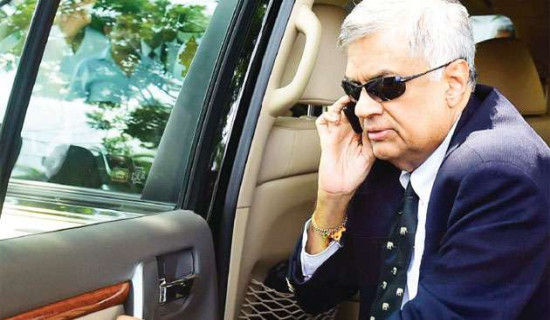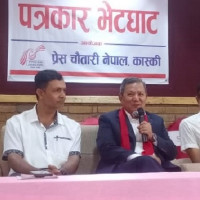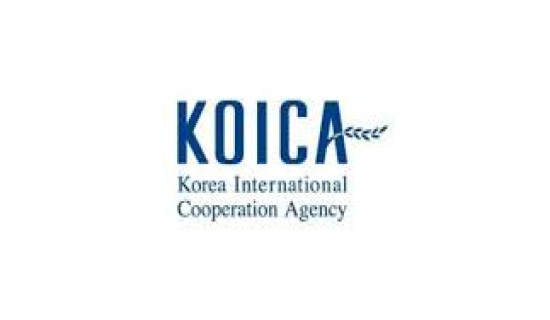- Friday, 22 August 2025
Outline Of Nepal-China Border Deal
On August 1, 1955, Nepal established formal diplomatic relations with China, becoming the 5th country to do so after the UK, the USA, India and France. This year marks the 70th anniversary of the establishment of diplomatic relations with China. On this occasion, not only high-ranking government authorities and political leaders, but also at the people-to-people level, citizens of both countries have exchanged visits in each other's countries.
The heads of state and governments of the two countries stated that Nepal-China friendship withstood the test of time as it consistently upheld mutual trust, sovereign equality and peaceful co-existence. Similarly, the two countries always respected each other, treated each other as equals, and engaged in mutually beneficial co-operation, setting a model for friendly relations between Nepal and China. It shows that friendship has become more intimate, stable, and amicable, respecting each other's geo-political sensitivity and territorial integrity.
Border treaty
The Nepal-China Boundary Agreement was signed on March 21, 1960, within five years of the establishment of diplomatic relations. Prime Minister Bisheswar Prasad Koirala and Chinese Prime Minister Chou-En-Lai had signed the boundary agreement. Then, the Boundary Treaty was signed by late King Mahendra Bir Bikram Shahadev and Liu Shaoqi, Chairman of the People's Republic of China, on October 5, 1961. Consequently, the Nepal-China First Boundary Protocol was signed by Dr. Tulsi Giri, Vice-Chairman of the Council of Ministers and Minister for Foreign Affairs, and Chinese Foreign Minister Marshal Chen-Yi on January 20, 1963, as the Plenipotentiary of their respective countries.
Similarly, K B Shahi, the Foreign Minister of Nepal and Huang Hua, the Foreign Minister of China, had signed the second Boundary Protocol between Nepal and China on November 20, 1979. Thereafter, the third Protocol was jointly signed on December 6, 1988, by the Foreign Minister Shailendra Kumar Upadhyaya and Qian Qichen, the Foreign Minister of China, in the presence of the Chinese Prime Minister Li Peng in Beijing. All these activities show the smooth and sequential dealings on the boundary business between Nepal and China.
It is to be noted that after the signing of the Boundary Treaty in 1961, border demarcation work was instantly started. During demarcation, there were disputes, controversies, claims, and counter-claims in 32 places, including the peak of Sagarmatha. All the disputes except Sagarmatha were settled and resolved amicably by the technical level joint committee within less than one-and-a-half years based on the principle of Panchsheel that stresses the territorial integrity, sovereignty, non-aggression, non-interference in internal affairs, equality and cooperation for mutual benefits.
The issue of Sagarmatha was settled amicably at the prime ministerial level. When Prime Minister B P Koirala visited Beijing in March 1960, China raised the ownership of Chomolungma/Sagarmatha. Chinese Premier Chou En-Lai paid a three-day state visit to Nepal on schedule to strengthen Nepal-China relations and to resolve the issue of Everest. At a press conference at the Singha Durbar Gallery Baithak on 28 April 1960. The Chinese Prime Minister said, "We had discussed the ownership of Everest. Now the Chinese government has decided that 'Mt Jolmo Lungma/Sagarmatha belongs to Nepal." After this, the Everest issue was laid to rest once and for all.
At that time, it was agreed that Sagarmatha could be climbed from both the Chinese and Nepali sides. Anyone who climbs Sagarmatha from the south has to secure a visa from the government of Nepal, while those scaling it from the north have to secure a visa from the Chinese government. This is an example of good understanding and mutual trust between Nepal and China.
The borderline was fixed and demarcated clearly and formally. It specified the border pillars serial numbers 1 to 79 from west to east and established 20 subsidiary pillars in between some major pillars, making 99 border pillars in total. The total length of the borderline was finally measured as 1439.18 kilometres, and it has yet to be connected to two tri-junctions on both the east and west ends. It is to establish the western tri-junction, 57 kilometres west of pillar number 1 at Tinkar (Darchula). Similarly, the eastern tri-junction at Jhinshang Chuli has to be erected 72 km east of pillar number 79 from Tiptala pass (Taplejung).
After the demarcation of the borderline, 57 sheets of strip maps had been prepared digitally. The position and condition of the border pillars constructed during the demarcation were clearly indicated in the detailed map. After the completion of demarcation works, the boundary protocol was prepared and duly signed by the plenipotentiaries of both countries.
Demarcation
During the demarcation of the boundary line, the watershed principle was adopted. Himalayan peaks, mountain ranges, crossing passes, and saddles, gorges, mid-stream, ravines, waterfalls, river confluences and boundary adjustment principles were adopted so that some of the areas have been exchanged mutually. In connection with the principle of exchange of lands, Nepal had transferred 1836 square kilometres (sq. km) of land to China. And China transferred a total of 2139 sq. km to Nepal.
By this process, Nepal had gained an area of 303 sq. km. The Nepal-China boundary agreement and subsequent treaty not only delineated the boundary but also laid the foundation for long-term cooperation for territorial integrity. Nepal and China share 14 border passes for the movement of people, stretching 30km in width, and cross into the frontier by showing a District Administration Permit to sell and buy consumable goods and materials in each other's areas. During the visit of Deputy Prime Minister and Minister for Foreign Affairs Narayan Kaji Shrestha to China on April 1, 2024, China agreed to reopen all 14 trade points. This will help in improving the livelihood of Nepalis living in border areas and facilitate bilateral trade.
(The author is an expert on border issues.)



